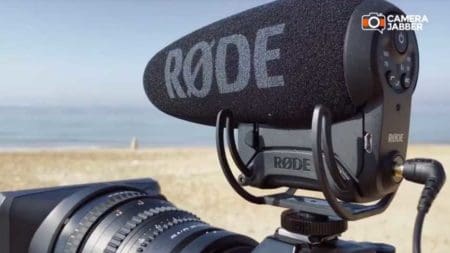Rode has given the VideoMic Go II a new acoustic design that we’ve previously seen with the Rode VideoMic NTG and NTG 5 microphones. It features annular line tube technology which is claimed to enable unmatched transparency and rich sound.
There’s no battery to charge in the VideoMic Go II as it uses power from whatever it’s plugged into either via a 35.mm or USB connection. As mentioned earlier, there are also no external controls on the microphone and the audio level is adjusted in-camera using the camera’s pre-amp settings. Alternatively, if the mic is connected to a smartphone, tablet or computer via USB, it can be adjusted using the Rode Central app.
You don’t need to power-up the VideoMic Go II, it works automatically when it’s connected to a device, however, with some cameras you may need to check that they’re set to work with an external mic.
Rode has given the VideoMic Go II a 3.5mm TRS output which means it is directly compatible with cameras featuring a 3.5mm mic port. There’s also a USB-C output for connecting the VideoMic Go II to a smartphone, tablet or computer. Apple iPhone users can connect the VideoMic Go II to their phone using Rode’s SC15 cable which has a Lightning connection at one end and a USB-C connection at the other end.
When the USB port is used to connect the microphone to a recording device, the mic’s 3.5mm port can be used as a headphone port. You can also use the USB connection to connect to a smartphone to check and adjust the microphones settings when you’re out in the field and recording with a camera.
As the Rode VideMic Go II is a shotgun mic, it has a very directional pick-up pattern, meaning it picks up the audio from subjects directly in front of it rather than behind or to the side. This makes it a useful option for recording specific subjects out in the field but also ideal for vlogging to camera and recording voiceovers or podcasts.
While Rode supplies a dense foam cover with the Rode VideoMic Go II, there’s no fluffy dead cat in the box, it has to be purchased separately.







